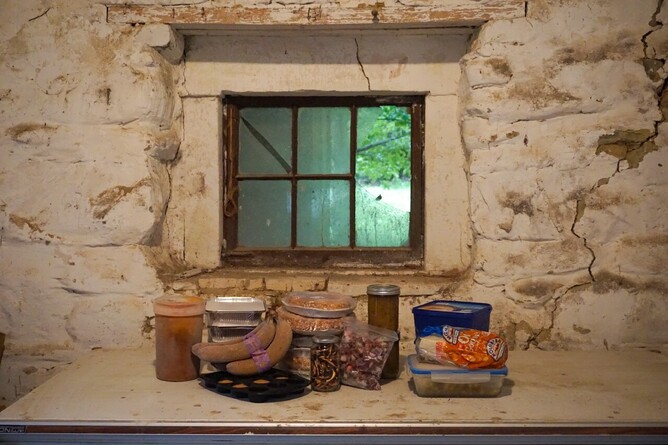I am a firm believer of always having a stash of meals in the freezer. Meals that you can whip out at last minutes notice when days are a little chaotic and the thought of making something from scratch is to put it simply, daunting. To me, winter is the perfect time to start thinking about and stockpiling the freezer. Spring is looming around the corner, where we will be busy rearing orphan lambs and calves and the slower pace of winter makes it easier to spend the morning in the kitchen prepping a few extra things for the freezer.
Some people allocate one day a month where they cook and bake specifically with the freezer in mind. For me, with 3 young children and having to cook for the farm team I find bulk cooking is the simplest way. If I am making my cheese rolls for morning smoko, I’ll simply double the recipe so one loaf can be frozen for a future day. If chilli con carne is on the lunch menu, then the dutch oven will be full to the brim with a bubbling chilli. Half of that will be destined for the freezer. While making a mince and cheese or bacon and egg pie a second will be baked and then popped in the freezer for a quick after school sports practice dinner.
My rule of thumb is to use any frozen goods within 4 months. While freezing doesn’t kill foodborne bacteria, it does massively slow down their ability to reproduce, which is why freezing is a great option to prevent food spoilage and allows you to store food away for another day. Once thawed, those bacteria’s wake back up and go about their business though, so it is important to eat the food relatively quickly once thawed.
Freeze things in an array of containers - cowboy cookie dough rolled and placed on baking sheets can be frozen and then transferred to bread bags. Measure and freeze ½ cup portions of stock into muffin trays to throw into soups and casseroles. Glass jars and containers are great for soups like my leftover lamb soup (just remember to leave headspace for the liquid to expand when freezing). And ice-cream containers are perfect for casseroles, pastas and curries. Try my throw it all in curry or lamb tagine which develops even more flavour when reheated.
When packaging food into containers try to remove as much air from the container as possible before freezing, or to fill the container as full as possible to help lessen the chance of freezer burn. I am a firm believer of looking at what you have on-hand before going out and purchasing new containers. The humble ice-cream container seems to be my go-to, as they are a freezer safe option, hold a substantial amount of food and also stack nicely in our large chest freezers. Just remember to label and date them, as frozen meals all take on an uncanny resemblance once frozen.
When it comes to reheating, it is important to thaw the freezer meals properly - the only exception here is the cookie dough which can be baked from frozen. Once thawed, freezer meals can be either reheated in the oven, on the stove top or in the crock-pot. I often use the crock-pot on town days and pop a loaf of bread in the bread maker for a quick prepped meal that looks and tastes like I made an effort (when in fact it took 5 minutes to throw together). Adding a few fresh herbs or vegetables can add a burst of freshness to reheated meals also. Try a handful of chopped parsley, or simply stir through some frozen peas 10 minutes before serving to add some fresh flavours and texture back into the reheated meal.

